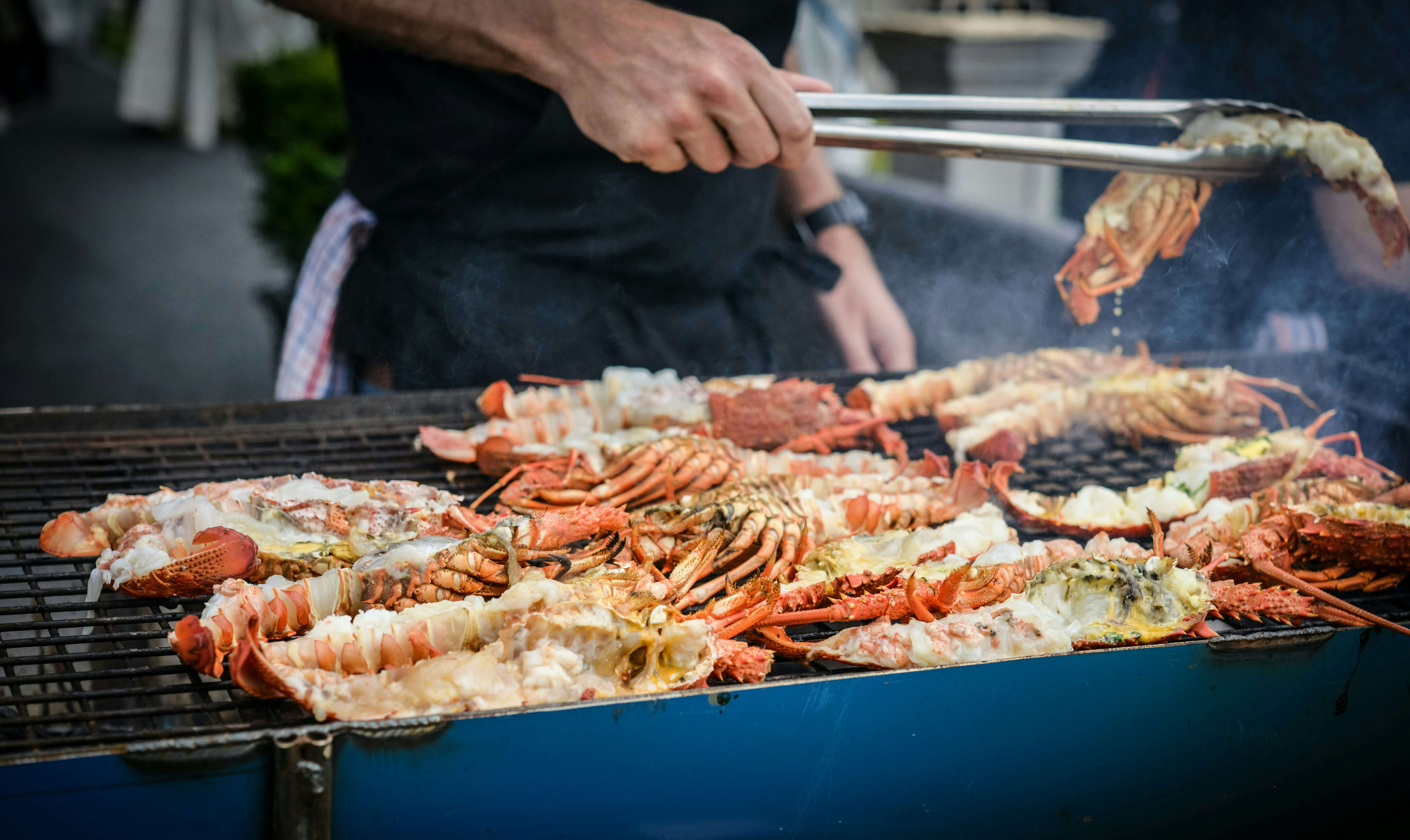Cooking Tips Cooking Fin Fish
Cooked to perfection, fresh fish is moist, tender, and full of delicate flavor. Generally, fish is done when it flakes easily with a fork and loses its translucent appearance. The U.S. Food and Drug Administration (FDA) recommends cooking fish to an internal temperature of 145°F to ensure safety.
Baking
Whole fish, stuffed fish, fillets, steaks, and chunks can all be baked. Use similar-sized pieces for even cooking. Bake uncovered in a preheated 450°F oven, following the 10-minute rule. Baste if desired.
BroilingSteaks, whole fish, split whole fish and fillets lend themselves well to broiling. Place fish, one-inch thick or less, two to four inches from the heat source. Place thicker pieces five to six inches away. Baste frequently with an oil-based marinade. Using the 10-minute rule, cook on one side for half the total cooking time, basting once or twice, then turn the fish over to continue broiling and basting. Grilling
This technique lends itself well to meatier or steak fish such as salmon, halibut, swordfish, tuna and whole fish. Preheat an outdoor gas or electric grill. If using a barbecue grill, start the fire about 30 minutes before cooking. Let it burn until white hot then spread coals out in a single layer. Adjust the grill height to 4 to 6 inches above the heat.
Microwaving
Use a shallow dish to allow maximum exposure to the microwaves. Arrange fillets with the thicker parts pointing outward and the thinner parts, separated by pieces of plastic wrap, overlapping in the center of the dish. Cover dish with plastic wrap and vent by turning back one corner. Allow 3 minutes per pound of boneless fish cooked on high as a guide. Rotate the dish halfway through the cooking time. Rolled fillets microwave more evenly and are less likely to over-cook than flat fillets, which may have thin edges.
PoachingPoach fish in simmering liquid such as fish stock, water with aromatic herbs/vegetables, or a mixture of wine and water. In a large skillet, saute pan or fish poacher, ring the liquid to a boil. Add the fish and return to boiling. Quickly reduce to a simmer-the liquid should barely bubble. Cover and begin timing the fish according to the 10-minute rule. The remaining liquid can be used to make a sauce for fish if desired. Sautéing or Pan-frying
An excellent method for fillets and pan-dressed fish like trout, tilapia and catfish.
SteamingWhole fish, chunks, steaks and stuffed fillets steam well. To steam fin fish, fill a large sauce pan with one inch of water. Place the fish on a steamer rack and put the rack in the pan. The water should not exceed the height of the rack. Cover tightly and bring the water to a boil. Using the 10-minute rule, steam until thoroughly cooked. Stir-Frying
This cooking method is a very fast technique, so it's important to have all ingredients in uniform size and ready for cooking.
ShrimpBoilingUse enough water to cover, plus 1 tbs. of salt. Boil medium size for 3-5 minutes or jumbo 8-10 minutes. Depending on the size, it takes from 3 to 5 minutes to boil or steam 1 pound of medium size shrimp in the shell. LobsterBoilingUse enough water in a large pot to cover lobsters and add 1 tablespoon of salt. All cooking times are from the time the water begins boiling after lobsters are placed in pot.
Size (lb) / Time
BakingBake at 350 degrees
CrabBoiling CrabsUse enough water to cover plus 1 tbs. of salt. Boil 10-12 minutes, 15-18 minutes for Jumbo. ClamsSteamingPlace 1 cup of water plus 1 tbs. of salt in steamer. Soft Shell clams take approximately 5-7 minutes or until open. ScallopsWhen cooked, scallops turn milky white or opaque and firm. Depending on size, scallops take 3 to 4 minutes to cook thoroughly. Shucked ShellfishShucked shellfish (clams, mussels and oysters without shells), become plump and opaque when cooked thoroughly and the edges of the oysters start to curl. The Food and Drug Administration (FDA) suggests: boiling shucked oysters for 3 minutes, frying them in oil at 375 for 10 minutes, and baking them for 10 minutes at 450. Shellfish (general)Clams, mussels and oysters in the shell will open when cooked. The FDA suggests steaming oysters for 4 to 9 minutes or boiling them for 3 to 5 minutes after they open. Shellfish-shrimp, crabs, scallops, clams, mussels, oysters or lobster--becomes tough and dry when overcooked. sources: National Fisheries Institute |
